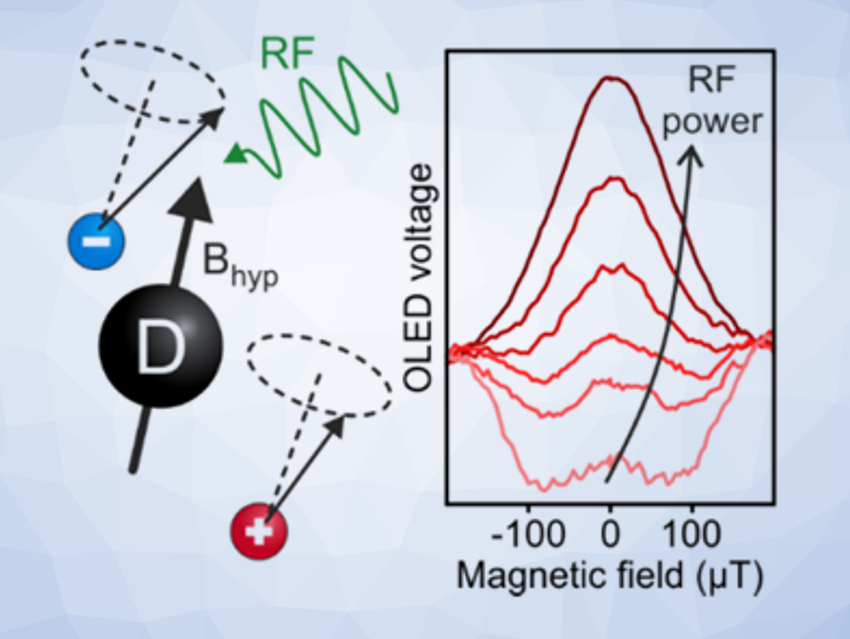Migrating birds navigate using biological magnetoreception—a curiosity that is thought to involve the interplay of photogenerated radical pairs in their retinal pigments with geomagnetic fields. A related phenomenon can be detected by organic light-emitting diodes (OLEDs).
John Lupton, University of Regensburg, Germany, and colleagues have developed an OLED device that uses a new organic semiconductor, d-MEHPPV (pictured below), in the active layer and can detect ultralow-frequency magnetic resonance. At low magnetic fields (<1 mT), resonances are compromised by the nuclear spins of protons. To minimize the influence of this effect, the team replaced hydrogen atoms on the side chains and backbone of the polymer with heavier deuterium atoms.
In an OLED, radical pairs with positively and negatively charged species are created using electricity. These radical pairs recombine to produce light. They possess their own magnetic moments and interact with magnetic fields like tiny compass needles, which makes the recombination spin-dependent. This spin-dependent recombination can be measured by observing the resulting resistance changes in the device under magnetic resonance—a method called electrically detected magnetic resonance (EDMR).

The team used the perdeuterated polymer to probe spin-dependent recombination by measuring changes in OLED resistance under variable magnetic field and radiofrequency excitation. The researchers believe that OLEDs can be used to detect magnetic resonances in magnetic fields down to Earth’s field strength. This could offer a new way to explore animal magnetoreception.
- Perdeuterated conjugated polymers for ultralow-frequency magnetic resonance of OLEDs,
John Lupton, Sebastian Milster, Tobias Gruenbaum, Sebastian Bange, Simon Kurrmann, Hermann Kraus, Dani Stoltzfus, Paul Burn, Anna Leung, Tamim Darwish, Christoph Boehme,
Angew. Chem. Int. Ed. 2020.
https://doi.org/10.1002/anie.202002477



